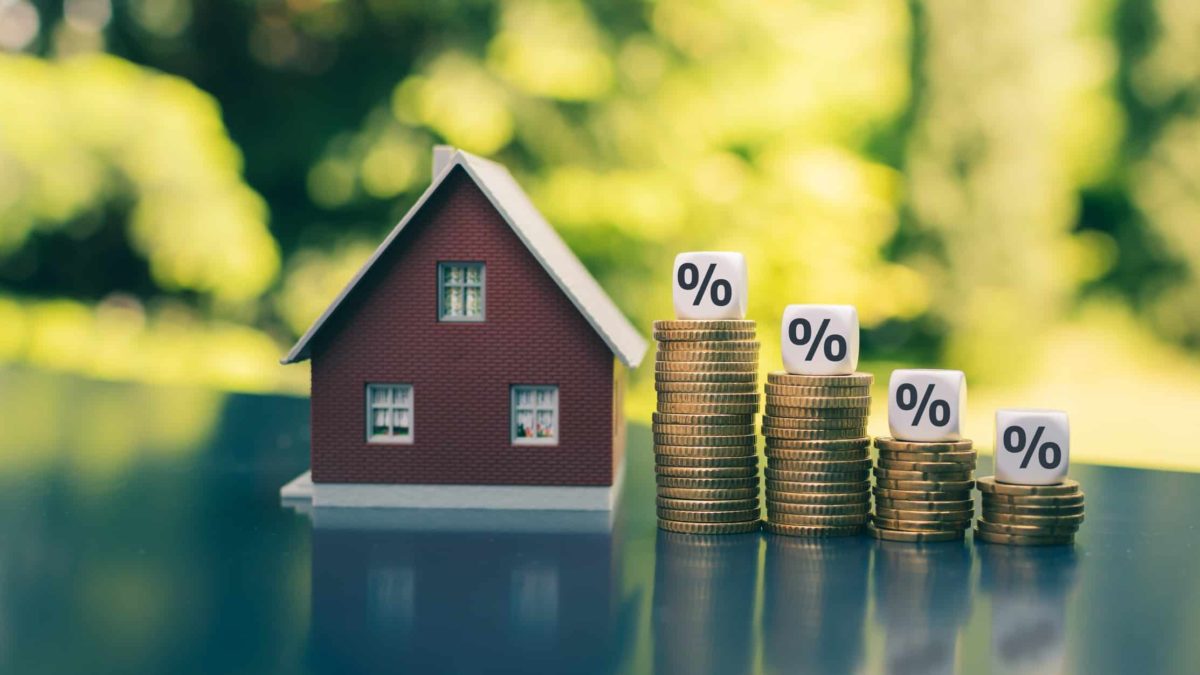"How on earth do you justify Australian house prices?"
It's a question usually asked, rhetorically, in exasperation by those trying to buy their first homes, or by others worried on their behalf.
But what if we tried to actually answer it?
Now, I'm no demographer. And I don't have the resources of the ABS behind me (but I did use their numbers, in part, to try to work it out). I also don't claim that my thoughts are academically supported, nor peer-reviewed.
Instead, I grabbed the back of the proverbial envelope and did some maths. (And because this is an emotive topic, let me be clear: none of what follows is a value judgement on whether it should be the case. It's just the numbers, telling a story).
I think there are three major reasons for the unusually large house price increases we've seen over the last 40 or so years. (There's a fourth, but it doesn't really go easily into the maths. It's more a 'barrier' than a question of an impact on prices. I'll cover that at the end.)
Here's my attempt to (very roughly) quantify them.
First, household incomes.
The western world took too long to treat women as equal members of society, ensuring they had equal suffrage. And we still – in 2021 – haven't fixed the gender pay gap.
But one improvement between those two times was the increase in female workforce participation. Rules requiring married women to resign from the public service were repealed. Laws banning gender discrimination were introduced. Contraception and more available childcare and early childhood education gave women more choice.
That meant more women able to, and choosing to, work. An important, overdue, improvement.
But there seems to have been a downside, ironically for those women themselves. The addition of a second income in many (then, soon after, most) households meant more room in the family budget.
And that 'room – the extra discretionary household income – was soon "competed away":
Couples decided they could – and would – pay a little more for the house they wanted. Others, who also wanted that same house, figured they could do the same.
Soon, the silent, perpetual rolling auction of home sales turned those choices into necessities. If everyone else was paying more, it was a case of putting up or being locked out.
Data from the Australian Institute of Family Studies in 2020 suggests that:
"Changes to employment patterns, including a larger female workforce, have resulted in significant increases to household income, with the 2017/18 financial year average weekly household income at $2,242 before tax, up from $1,361 in 1995/96."
That's an increase of 65% in just over 20 years.
They didn't offer data before 1995.
According to a study from Griffith University, in 1970, female workforce participation was 38.6%. More recent data puts it at 57.6%.
I think it's reasonable to add 20% to that household income increase, if we were to imagine what the increase might have been since, say, 1980. That might even be too low, but better to be conservative.
So let's take a stab and say that household income might be up around 85% since 1980, and much of it because of the increase in female workforce participation.
And while I'm hopeful women spent a decent proportion of that extra household income on their own wants and needs, it's also probable that, on top of a second car, better telly and a few other things, much of the economic bounty of women's liberation ended up going into higher house prices.
So let's take another stab and say that half of the increase in household income is thanks to women entering the workforce in larger numbers.
That means our first number is 42.5%
Let's turn, then, to the second factor: loan terms.
When I was a kid (and when I bought my first property) the standard loan term was 25 years. These days, without any fanfare I can recall, the standard has crept to 30 years.
Now, much of the "benefit" of those extra 5 years is taken up by interest (the debt compounds over a longer timeframe because the principal is repaid more slowly), but some goes into prices.
Here's the maths.
Let's say I wanted to borrow $800,000 over 25 years.
The average monthly repayment, according to ASIC's MoneySmart calculator, would be $3,549 per month at the current average interest rate of 2.4% (and excluding fees).
But if I pay it back over 30 years, instead, I can now borrow $910,000 instead.
Like magic, my borrowing capacity has gone up by 14%. (Oh, and I'd pay another $100k in interest, too!)
So that's our second number: 14%
Let's go to the big one, last: Interest rates.
The website info choice says:
"Interest rates on home loans hit 10.38 per cent pa in July 1974 and stayed at around that level until September 1980."
And, as we just saw from MoneySmart, the current rate is 2.4%.
Let's do the maths on the same 25-year loan, above, but at 10.4% rather than 2.4%. (I'm using 25 years rather than 30, so we don't double count the factors).
Instead of $3,549 per month paying off an $800,000 loan, I could only borrow $379,000.
So falling rates have more than doubled my borrowing capacity.
Our third number: A gain of 111%
It's time to roll it all together:
Today, a household that can afford to put $3,549 a month into a mortgage can afford to borrow $910,000. And let's assume they can afford to pay lenders mortgage insurance and have a 5% deposit.
They could buy a $955,000 house.
Now, let's start adjusting for those factors.
First, my rough guess on the impact of second incomes. If we assume:
1. Household incomes are up around 42% because of more women entering the workforce; and
2. Two thirds of that extra income gets put toward mortgage repayments
Then the average household can afford to pay around 28% more for a house, these days. Or, in the past, it was 28% less.
So for the individual, let's say the monthly repayments fall to $2,772.
Let's go back to a 25 year loan.
And let's increase the interest rate to 10.4%
My borrowing capacity falls from $910,000 to $296,000.
With a 5% deposit, I can only buy a $310,000 house, rather than one selling for $955,000.
Or, expressed another way, the impact of:
– More women in the workforce;
– Longer repayment periods; and
– Lower rates
… means we're now able to pay more than three times as much for a house as we might have, 40 years ago.
I promised you a fourth factor, too.
That's the deposit required. When I was a kid, a 20% deposit was standard. Now, it's as little as 5% (and sometimes less). Using our example, 20% of $310,000 is $62,000 and 5% of $955,000 is $47,500. So, in theory, the lower deposit is adding to demand as well, especially after adjusting for increases in income.
It's hard to directly attribute the impact of the change in deposit requirement (and we'd have to add the cost of lenders mortgage insurance, too), but I didn't want to leave it unmentioned.
So where does that leave us?
Well, first, these numbers are rough. In some cases, educated guesses. And, as ever, 'correlation does not equal causation'.
Perhaps, most importantly, I want to be very, very clear that I'm not suggesting that more women in the workforce are somehow to 'blame' for the situation we're in. God knows they're blamed for a lot they're not responsible for these days, and this should be no different.
It does seem inescapable that we all, as a society, allowed the benefits of women's liberation to be, in some small or large part, siphoned off into higher house prices. But 'blaming' it is the wrong response. (For my part, it would be nice to think a smart(er) society might have used the increased economic benefit to work less, overall, for more leisure time, and/or for families to enjoy the benefits of extra income in ways other than higher mortgage repayments!)
Back to the summary, then.
There may well be other reasons.
Some of my numbers and/or assumptions might be wrong.
But I thought it was a useful exercise to go through, as we grapple with 'how high is too high' for house prices, and we think about how we got here.
You'll note, too, that I didn't even touch the introduction of negative gearing and capital gains tax changes. It seems impossible that these changes wouldn't have added fuel to the fire, though calculating 'how much fuel' and 'how much hotter the fire' is a much more difficult exercise.
In the other direction, you can argue that the numbers above should be more carefully inflation-adjusted, too (though the increase in household earnings takes care of some of that).
But I think we can reasonably, mathematically, explain – at least directionally – some of the reasons Australian housing has increased so meaningfully over the past few decades.
And one thing seems clear – to me, at least: households are unlikely to add a third income any time soon, interest rates are essentially as low as they can get without going negative, and God forbid 35- or 40-year mortgages become the norm.
Which means, even if we can explain why house prices have increased so far and so fast, it's very unclear how they increase meaningfully from here.









